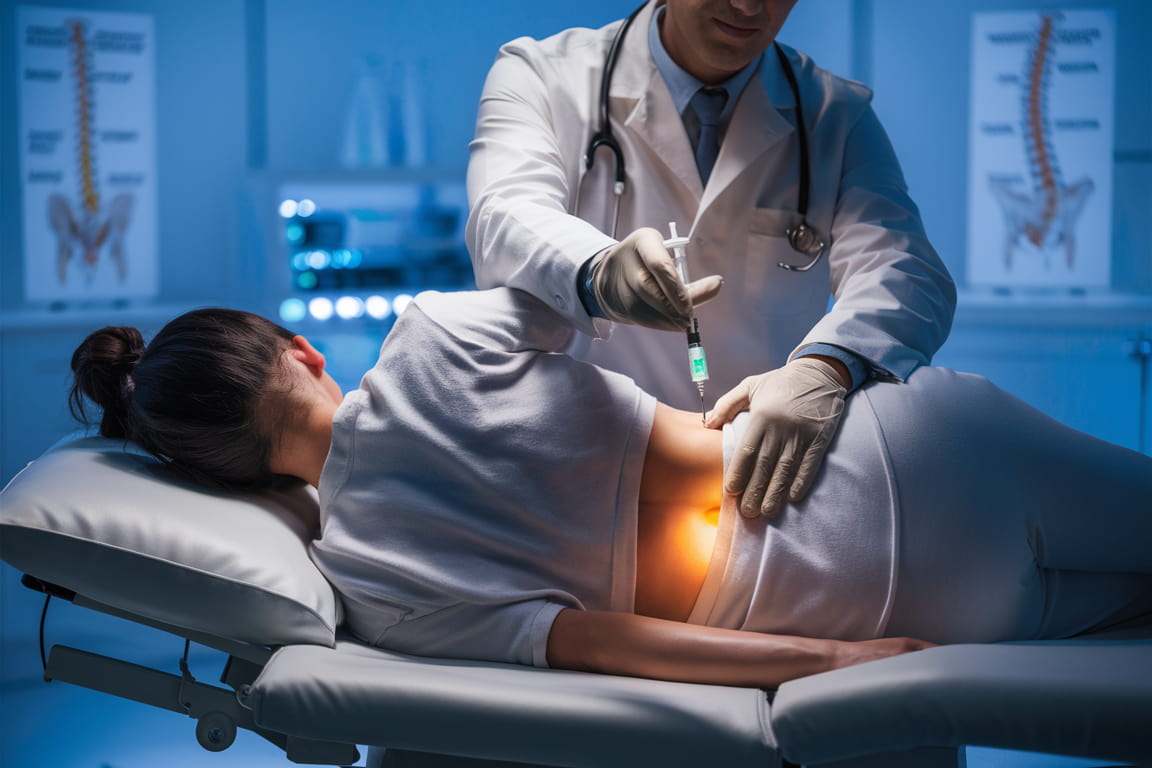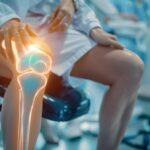Back pain is one of the most widespread and debilitating health issues globally, affecting millions every year. Back pain can significantly affect one’s quality of life, causing everything from sharp, sudden pain to dull, chronic discomfort. It can hinder the ability to perform even the most basic daily activities. Traditional treatments such as painkillers, physical therapy, & surgery offer temporary relief but often come with significant drawbacks, including long recovery times, potential complications, and high chances of recurrence.
In recent years, stem cell therapy has emerged as a revolutionary treatment for back pain, offering hope for those seeking option to invasive procedures. This article delves into the science behind stem cell therapy for back pain, how it works, and what patients can expect regarding results.
Understanding Stem Cell Therapy for Back Pain
What Are Stem Cells?
Stem cells are the body’s foundational cells with the unique power to differentiate into various types of cells, including bone, muscle, cartilage, and nerve cells. These versatile cells are the body’s natural repair system, capable of regenerating damaged tissues. Stem cells can be sourced from other locations within a patient’s body, making them ideal candidates for regenerative treatments.
Types of Stem Cells Used in Therapy
There are several types of stem cells used in regenerative medicine, each offering unique properties:
- Embryonic Stem Cells (ESCs): These cells can differentiate into any cell in the body, making them highly versatile. However, their use is controversial & heavily regulated.
- Adult Stem Cells: Found in adult tissues such as bone marrow & fat, adult stem cells have a more limited ability to differentiate but are less controversial. They are often harvested from the patient’s body, reducing the risk of rejection.
- Mesenchymal Stem Cells (MSCs) are adult stem cell normally sourced from bone marrow or adipose tissue, which can differentiate into bone, cartilage, & fat cells. MSCs are most commonly used in stem cell therapy for back pain due to their ability to target spinal tissues effectively.
How Stem Cell Therapy Work for Back Pain
Back pain often arises from degenerative diseases such as degenerative disc disease, herniated discs, spinal stenosis, and facet joint arthritis. These conditions result in the breakdown of spinal tissues, leading to inflammation, nerve compression, and persistent pain. Traditional treatments focus on alleviating symptoms rather than addressing the underlying causes of pain, whereas stem cell therapy targets the root cause by promoting the regeneration of damaged tissues.
 The Procedure: From Harvesting to Healing
The Procedure: From Harvesting to Healing
- Harvesting Stem Cells: The first step involves harvesting stem cells from the patient’s body. This is typically done through minimally encroaching procedures, similar as extracting fat (adipose tissue) or bone marrow, most commonly from the pelvis. The choice of tissue depends on factors such as the patient’s condition and overall health.
- Processing and Concentration: Harvested stem cells are processed in a laboratory to concentrate and prepare them for injection. In some cases, additional substances like platelet-rich plasma (PRP) are added to enhance the stem cells’ regenerative potential.
- Injection into the Affected Area: The concentrated stem cells are injected directly into the damaged spine area. This is usually done under imaging guidance, such as fluoroscopy or ultrasound, to ensure accurate placement.
- Healing and Regeneration: After the injection, the stem cells begin to work by releasing growth factors and other molecules that stimulate the body’s natural healing processes. Over time, this can lead to the regeneration of damaged tissues, reduced inflammation, and pain relief.
Back Pain Conditions Treated with Stem Cell Therapy
Stem cell therapy is utilized to treat various spinal conditions that lead to chronic back pain, including:
- Degenerative Disc Disease (DDD): This condition occurs when the intervertebral discs in spine wear down, causing pain, stiffness, and limited mobility. Stem cell therapy helps repair damaged disc tissue, potentially reducing pain and restoring movement.
- Herniated Discs: When soft inner core of spinal disc pushes through crack in its outer shell, it can irritate nearby nerves & cause pain. Stem cell therapy can help decrease inflammation and promote healing in damaged discs.
- Spinal Stenosis: This condition causes spinal canal to narrow, putting pressure on spinal cord & nerves. Stem cell therapy may help regenerate spinal tissues, alleviating symptoms such as pain, numbness, & weakness.
- Facet Joint Arthritis: The facet joints in spine can become inflamed & painful due to arthritis. Stem cell therapy can reduce inflammation and help regenerate joint tissues, relieving the pain associated with facet joint arthritis.
 Advantages of Stem Cell Therapy Compared to Conventional Treatments
Advantages of Stem Cell Therapy Compared to Conventional Treatments
Stem cell therapy offers several key advantages over traditional back pain treatments:
- Minimally Invasive: Unlike surgery requiring large incisions and lengthy recovery times, stem cell therapy is minimally invasive. The procedures typically involve small punctures; many patients can return home the same day.
- Reduced Recovery Time: Due to minimally invasive nature of stem cell therapy, recovery is typically faster than surgery. Most patients experience mild soreness at the injection site, which resolves within a few days.
- Long-Term Relief Potential: Stem cell therapy addresses the underlying cause of pain by promoting tissue regeneration. This could result in more lasting relief than pain medications or traditional treatments that only temporarily relieve symptoms.
- Lower Risk of Complications: Stem cell therapy is generally considered safer than surgery, with fewer risks such as infection, blood clots, or anaesthesia complications. Since the stem cells are sourced from the patient’s own body, the risk of rejection is minimal.
Case Studies: Success Stories
Real-world examples of patients benefiting from stem cell therapy for back pain show promising results:
- Case Study 1: Degenerative Disc Disease: A 45-year-old woman with chronic lower back pain from degenerative disc disease underwent stem cell therapy after years of unsuccessful treatments. Within six months, she reported significant pain relief, improved mobility, and a return to her normal activities without the need for medication.
- Case Study 2: Herniated Disc: A 50-year-old man with a herniated disc causing severe sciatica opted for stem cell therapy to avoid surgery. After the procedure, he experienced substantial pain reduction and could resume carpentry work without restrictions.
Expert Opinions on Stem Cell Therapy for Back Pain
Medical professionals are increasingly recognizing stem cell therapy as a valuable treatment option for chronic back pain. An orthopaedic surgeon, Dr. John Smith, says, “Stem cell therapy is a significant advancement in the treatment of chronic back pain. It provides a less invasive alternative to surgery and has the potential for long-lasting relief.”
Dr. Jane Doe, a specialist in regenerative medicine, adds, “Early results from stem cell therapy are promising. While more research is needed, many patients who were once facing invasive surgery are now experiencing relief through this innovative, minimally invasive treatment.”
What to Expect During the Patient Journey
For those considering stem cell therapy for back pain, the patient experience typically follows these steps:
- Consultation: Patients meet with a specialist who assesses their condition and determines whether they are a suitable candidate for stem cell therapy.
- Preparation: Certain medications, especially those that affect blood clotting, may need to be paused before the procedure.
- Procedure: The harvesting and injection process is performed under local anaesthesia, usually taking a few hours.
- Recovery: Most patients experience mild soreness at the injection site, with full recovery often occurring in few days. Patients are normally advised to abstain from strenuous plan during this period.
- Follow-Up: Regular follow-up appointments help monitor progress, with many patients reporting gradual improvements in pain and function over the coming months.
Conclusion
Stem cell therapy for back pain is groundbreaking treatment that offers a promising alternative to traditional methods like surgery and pain management. By targeting root causes of pain & promoting tissue regeneration, stem cell therapy provides the potential for long-lasting relief. With ongoing research into its effectiveness, stem cell therapy may become a widely recognized solution for individuals suffering from chronic back pain, helping them regain their quality of life.


 The Procedure: From Harvesting to Healing
The Procedure: From Harvesting to Healing Advantages of Stem Cell Therapy Compared to Conventional Treatments
Advantages of Stem Cell Therapy Compared to Conventional Treatments






